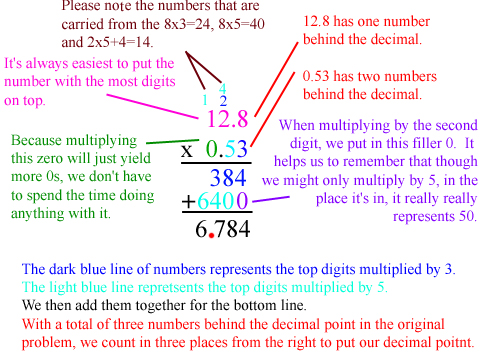Assignments: 03-Multiply Decimals
Similar to adding and subtracting decimals, multiplying decimals is very similar to multiplying multi-digit numbers, with the small twist of the decimal point. In fact, when multiplying decimals, we ignore the decimal points in the beginning. 3.2×4.8 would be the same as 32×48 until the final steps. 32×48=1536. The final step is to count how many numbers there were past a decimal point in the original problem, and then count in that many places in the answer. 3.2 has one number past the decimal, as does 4.8, so in our solution, we count in two places from the right and put our decimal point into the answer, so 1536 becomes 15.36.
There is part of our practice that will simply ask us to do that final step.
Place the decimal point in each produce.
1.2 x 3.6 = 432.
Again, if we count, each of the numbers has one digit past the decimal point, so
1.2 x 3.6 = 4.32
An problem involving multiplying decimals would look as follows. Please pay careful attention to all of the side notes around it.
One final thing to make note of is multiplying by multiples of 10. If I multiply by 10, it simply moves the decimal points one place to the right. Just like 3×10=30, 3.2×10=32.

